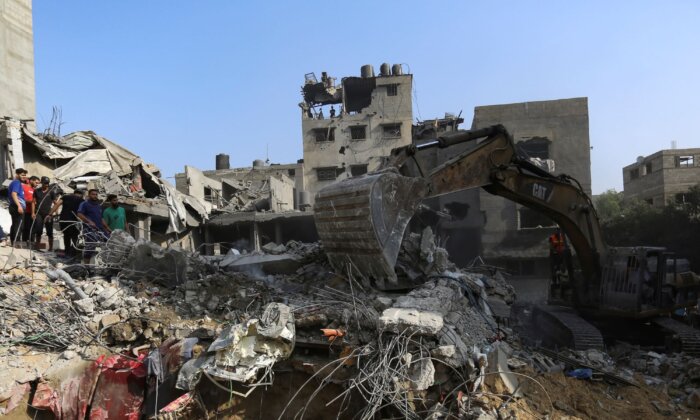There are conflicting reports about the human death toll in Gaza, with some suggesting that nearly half of the deaths are Hamas members and their family members. The Gaza authorities stated in early October that over 42,000 people had been killed in the strip due to Israel’s response to Hamas terrorists’ attack. However, some estimates put the death toll much higher, at more than 186,000, considering missing individuals and the region’s shortages of essential resources.
The accuracy of these figures has been questioned, as they rely on information from a health ministry controlled by Hamas. Critics argue that the numbers may be inaccurate or fabricated, pointing out statistical anomalies and the challenge of identifying combatants among the dead.
The controversial nature of the issue was highlighted when the United Nations adjusted its civilian casualty figures based on data from Hamas-controlled agencies in Gaza. The UN now reports lower casualty numbers, acknowledging the need for scrutiny of information provided by Hamas affiliates.
Israel’s defense forces claim that a significant portion of the deaths were Hamas fighters, while others argue that Hamas categorizes anyone under 20 as a child and uses young boys as combatants. Skepticism regarding the accuracy of casualty statistics from Gaza health authorities, controlled by Hamas, persists.
Reports from statistics experts have raised concerns about anomalies in the data, such as consistent daily increases in casualties. These anomalies have led to suspicions of fabricated numbers released by the Gaza Health Ministry. He stated that child casualties should correspond with women casualties, as they both vary each day due to strikes on residential buildings and tunnels. Days with many women killed should also see many children killed, and vice versa. However, statistical analysis shows the opposite, indicating that the numbers may not be accurate.
The health ministry’s data suggests that 70 percent of casualties are women or children, a much higher figure than in previous conflicts with Israel. The number of male casualties reported does not align with Hamas’ claim of 6,000 fighters. There are also issues with attributing deaths to Israel, such as those from natural causes or misfired rockets.
Despite these challenges, Israel has maintained a low collateral damage ratio, with an estimated 18,000 to 20,000 Hamas operatives among the reported casualties. This ratio is significantly lower than in similar conflicts, such as the fight against ISIS in Iraq.
There are suspicions about the rapid reporting of casualties by the Gaza Health Ministry, especially in the midst of war. The accuracy of these figures is questionable, as highlighted by discrepancies in reporting incidents such as the bombing of Al Ahli Hospital.
Overall, experts agree that the reporting of casualties in Gaza is complex and may not accurately reflect the reality on the ground. The unique challenges posed by groups like Hamas and Hezbollah make it difficult to determine civilian death totals with certainty.
They hide behind civil society as a shield.
Their extensive tunnel network, terror infrastructure, military expertise, advanced equipment, and technological and intelligence capabilities make them a more formidable adversary than ISIS, he explained.
Israel has successfully eradicated Hamas almost entirely within a year and weakened the much stronger Hezbollah, potentially shifting the entire regional power balance, according to Michael.
“This is a significant and remarkable accomplishment. Israel’s actions to safeguard the future of the free world will be recognized and appreciated in due time,” he added.





